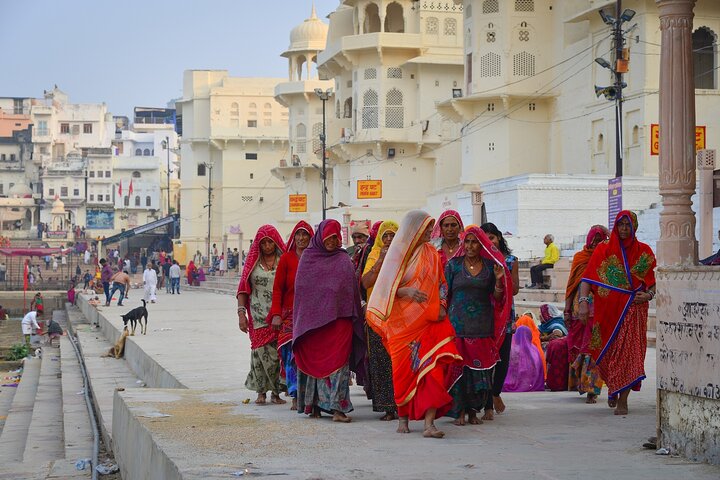Whispers of the Past: A Journey Through Bikaner’s Mystical Landmarks
Drawn by the allure of ancient architecture and sacred legends, I embarked on a journey from Bikaner to explore the enigmatic Junagarh Fort and the mysterious Karni Mata Temple. What I discovered was a world where history and myth intertwined, revealing stories that transcended time.
The Enigmatic Junagarh Fort
The sun was a molten orb, casting long shadows over the ancient city of Bikaner as I embarked on my journey to the Junagarh Fort. This formidable structure, built in 1588 by Raja Rai Singh, stood as a testament to the architectural prowess of a bygone era. As I approached the fort, the red sandstone and marble facade glowed with an ethereal light, whispering secrets of the past to those who dared to listen.
The fort’s Suraj Pol, or Sun Gate, welcomed me into a labyrinth of courtyards and palaces. Each step I took resonated with the echoes of history, as if the very stones beneath my feet were alive with stories. The Chandra Mahal, with its exquisite paintings and mirrors, was a kaleidoscope of colors and reflections, a place where time seemed to stand still. The Phool Mahal-Ki-Saal, adorned with stucco motifs and mirror work, was a sanctuary of beauty, a hidden gem within the fort’s walls.
As I wandered through the Anup Mahal, Dungar Niwas, and Ganga Niwas, I felt a connection to the past, a sense of belonging to a world that had long since faded into memory. The Har Mandir, a majestic chapel for the royal family, was a place of reverence and worship, a reminder of the spiritual devotion that once permeated these halls.
The Sacred Rats of Karni Mata Temple
Leaving the fort behind, I journeyed to the Karni Mata Temple, a place shrouded in mystery and legend. The temple, dedicated to Karni Mata, an incarnation of Goddess Durga, was a sanctuary for the sacred rats known as Kabbas. As I entered the temple, the air was thick with the scent of incense and the sound of scurrying feet.
The rats, revered by devotees, moved freely within the temple grounds, their presence a symbol of the divine. The intricately carved silver gates, a gift from Maharaja Ganga Singh, stood as a testament to the temple’s significance. As I watched the priests and devotees feed the rats, I was struck by the sense of harmony and reverence that filled the air.
The temple was a place of pilgrimage, drawing visitors from across the country and beyond. It was a place where the boundaries between the sacred and the mundane blurred, where the divine was made manifest in the most unexpected of forms. As I left the temple, I carried with me a sense of wonder and awe, a feeling that I had glimpsed something truly extraordinary.
The Road to Jaisalmer
As the day drew to a close, I found myself on the road to Jaisalmer, the golden city of Rajasthan. The landscape stretched out before me, a vast expanse of desert and sky, a canvas painted with the colors of the setting sun. The journey was a meditation, a time to reflect on the experiences of the day and the stories I had uncovered.
The road was a ribbon of possibility, leading me to new adventures and discoveries. As I traveled, I thought of the fort and the temple, of the history and mystery that lay within their walls. I felt a sense of gratitude for the opportunity to explore these hidden gems, to uncover the stories that lay beneath the surface.
In the fading light, I arrived in Jaisalmer, a city that promised new wonders and experiences. As I stepped into the city, I knew that my journey was far from over, that there were still stories to be told and mysteries to be unraveled. The Jaisalmer Journey had only just begun, and I was eager to see where it would lead me next.





















































